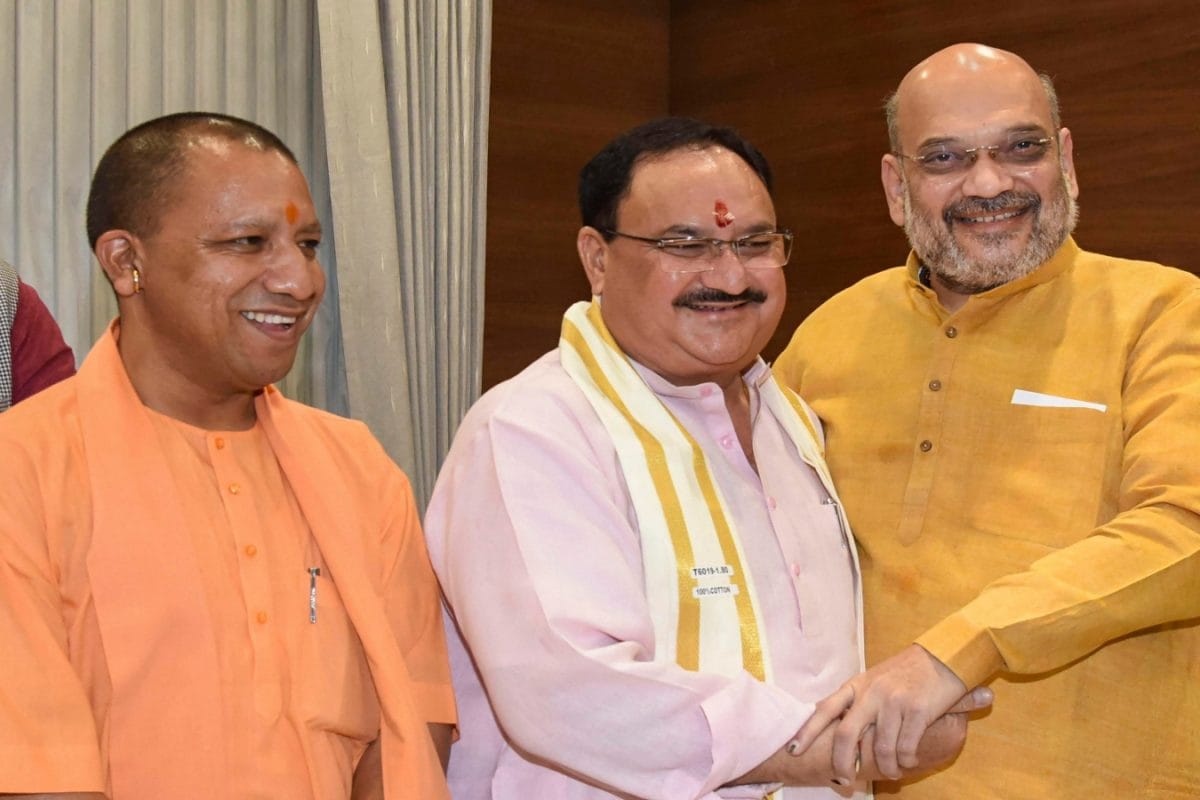

Uttar Pradesh, a politically crucial state with 80 Lok Sabha seats and 403 assembly seats, is bracing for significant political realignments as the Bharatiya Janata Party (BJP) strategizes for the 2027 Assembly elections. Following a setback in the 2024 Lok Sabha elections where its seat tally decreased from 62 in 2019 to 33, the BJP is undertaking a comprehensive organizational overhaul to regain its foothold.
The BJP's strategy involves multiple layers, including a focus on social arithmetic, organizational restructuring, and targeted outreach programs. The party is actively considering a new state unit president who can consolidate support among key caste groups, especially the non-Yadav Other Backward Classes (OBCs), while countering the opposition's caste-based alliances. Several leaders are in contention for the position, with a preference for someone from eastern Uttar Pradesh, where the BJP faced considerable losses in the 2024 elections. Names of OBC leaders like Dharmpal Singh, B.L. Verma, and Baburam Nishad are being discussed, along with Dalit leaders such as Ram Shankar Katheria and Vinod Sonkar. Appointing a Dalit leader would be a strategic move to win back Scheduled Caste voters who shifted towards the INDI Alliance of Congress and Samajwadi Party (SP) in the recent elections.
A key component of the BJP's strategy is an intensive outreach campaign targeting the Dalit community. State general secretary (organisation) Dharampal Singh is spearheading this initiative through district-level dialogues named 'Anusoochit Jaati Samvad'. This campaign aims to address the opposition's narrative regarding B.R. Ambedkar, the Constitution, and related issues. The Scheduled Caste population constitutes approximately 21% of Uttar Pradesh's electorate, making this demographic a crucial target for the BJP.
In addition to Dalit outreach, the BJP plans to launch a state-wide campaign centered on the proposed caste enumeration exercise scheduled alongside the 2027 national Census. This initiative seeks to reinforce the party's support among OBCs by highlighting the anticipated benefits of caste-based enumeration, such as targeted welfare programs, identification of disparities in resource distribution, and improved policymaking on affirmative action. The BJP aims to steer the caste census narrative toward development and national integration, showcasing its existing welfare schemes for backward castes and linking the census with its broader governance agenda.
The Samajwadi Party, led by Akhilesh Yadav, is also gearing up for the 2027 elections by reinforcing its alliance with the INDIA bloc. Yadav has announced that the SP will contest the elections as part of the INDIA bloc, aiming to present a united front against the BJP. The SP's PDA (Pichhda, Dalit, Alpsankhyak) strategy, which focuses on backward classes, Dalits, and minorities, is central to their campaign. Yadav has criticized the BJP's governance and promised a caste census, seeking to consolidate the SP's traditional vote base and challenge the BJP's social coalition.
Meanwhile, the Congress party is actively rebuilding its grassroots organization across Uttar Pradesh, with the goal of strengthening its presence before the 2027 elections. While focusing on this organizational revamp, the party anticipates forming a "respectful and suitable" alliance, likely within the INDIA bloc, to challenge the BJP. The Congress is also preparing for the 2026 panchayat polls, viewing them as a testing ground for the 2027 elections.
As the political landscape heats up, Chief Minister Yogi Adityanath has predicted a sweeping victory for the BJP in the 2027 elections, asserting that the party will secure more than 80 per cent of the seats. Adityanath has described the upcoming election as an "80:20 battle," indicating the BJP's aim to consolidate a significant majority of the votes. However, the BJP faces challenges, including countering the opposition's PDA politics and addressing concerns among various caste groups. The party's organizational strategy involves creating a balance of social groups by accommodating multiple castes, working at the grassroots level, and solidifying social alliances.